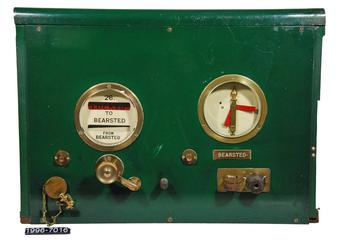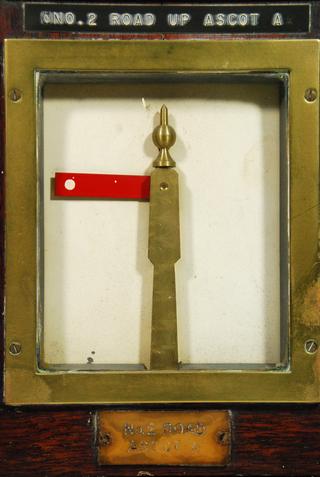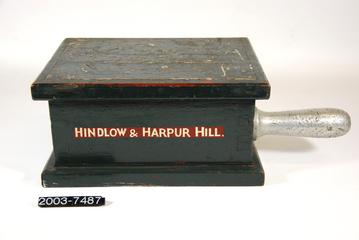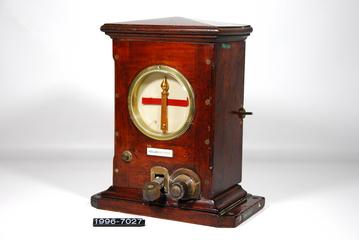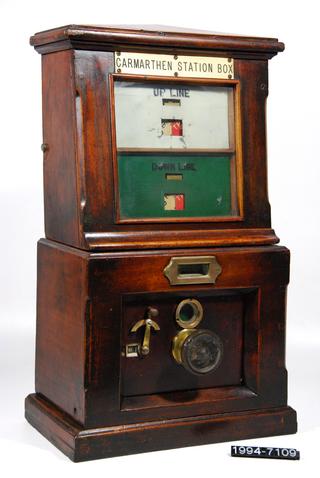
Staff and ticket box, Kinnersley and Llanymynech








Staff and ticket box, wooden, Kinnersley and Llanymynech (Shropshire & Montgomeryshire Railway).
Single line working is one of the more dangerous aspects of railway operation. Trains often travel in either direction over a single line section and can only pass at passing loops or stations. Signallers control access by issuing a staff or tablet, unique to a specific section of single line, to train drivers as authority to proceed. This ensured only one train was in section at any one time.
Where single lines might experience more than two trains travelling in the same direction in succession, a method of working was developed to ensure the single line staff is not taken to the wrong end of the section. Called ‘staff and ticket’, a train staff unlocks a box containing paper or metal tickets. The signaller issued individual tickets to give successive trains authority to enter the single line section. Both staff and ticket must be shown to the driver or guard before the ticket is accepted. The staff, retained by the signaller, is issued to the driver of the last train entering the section. It is then surrendered to the signaller at the exit, allowing the process to repeat in the opposite direction.
This staff and ticket box was part of the signalling arrangements for a 4.5-mile section of the Shropshire and Montgomeryshire Light Railway between Kinnerley Junction and Llanymynech, near the Welsh border. One of several independent light railways promoted by Holman Stephens to serve rural districts, the firm took control of a dormant railway owned by the Shropshire Railways Company. Services commenced in 1911.
The line ran 18 miles from a terminus at Shrewsbury Abbey to Llanymynech, where it joined a section of the Cambrian Railway line between Oswestry and Newtown to allow access to its branch line to Nantmawr Quarry. The venture was not a financial success; furthermore, the War Department took control of the line in 1941 to access its Nesscliffe armaments depot and while the line was nationalised in 1948, it was closed in 1960.
Details
- Category:
- Signalling & Telecommunications
- Object Number:
- 1998-10431
- Materials:
- wood (unidentified)
- type:
- box
- credit:
- Pearce Higgins, Selwyn

